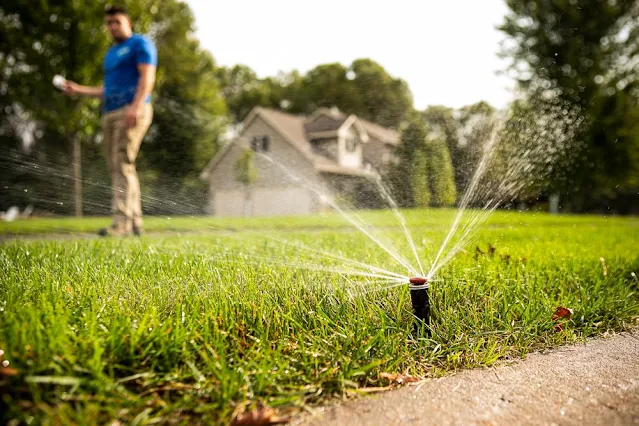Common Sprinkler Head Problems And Easy Fixes
The sprinkler heads associated with household irrigation systems are the easiest problems for property owners to identify. You can't miss a broken or malfunctioning sprinkler head because it leaves donut shapes and brown spots in the grass, pools of water, misting and drifting that cause water to run off onto sidewalks and driveways, and other problems.
If these things are happening in your yard, you may be having one or more of the following problems with your sprinkler head:
Blockages/Clogging
The absence of water from a sprinkler head often indicates a clog. Like a bathroom shower head, the head of a lawn sprinkler can become clogged with debris, resulting in a decrease in water pressure. Among the most common causes of a clogged sprinkler head are:
Dirt accumulation. Automatic sprinkler systems for residential properties utilize sleeves buried in the ground to store sprinkler heads that rise when water is activated. Regular usage of the sprinkler system can lead the sprinkler head to become clogged with dirt and muck, rendering it ineffective. The last thing you want is a sprinkler pipe that is clogged.
Debris on screens Screens on sprinkler heads are meant to keep mud and dirt from getting into the nozzle, but they can get clogged with dirt and other things, which slows the flow of water.
Debris in the sprinkler head and nozzle.A sprinkler head can also become clogged when debris enters the nozzle or the spray head directly. If sand or dirt has gotten into a Rain Bird sprinkler head, the wiper seal or the whole sprinkler head may need to be replaced.
How to fix sprinkler head nozzles: If a sprinkler head is just partially clogged, clean the opening using a paper clip or a piece of stiff wire. For completely clogged heads, you must remove them from the sleeve, disassemble them, immerse them in water, and clean them with wire. Finish by flushing the toilet head with running water. Before reinstalling the head, be careful to also clear the sleeve and remove debris.
Misting
Spray heads that mist or fog can be caused by high or changing water pressure. This means that some areas won't get enough water and that the lawn irrigation system could be damaged.
How to fix it: If only one zone is misting, you may be able to fix the problem by lowering the flow control at the valve or by calling a professional to install a valve pressure regulator. Also, you can control too much pressure at the point of distribution by using spray heads and rotors with a stem that lets you adjust the pressure.
Leaks around the stem
Incorrectly installed sprinkler heads, which are commonly referred to as "mower bait" by lawn-care professionals, are sometimes destroyed by a lawn mower, resulting in sprinkler leaks. Normal deterioration will also eventually compromise the wiper seal of the sprinkler head, causing leaks around the spray head's stem. This is not how sprinkler heads are activated without water.
However, leaks in your sprinkler system can also be caused by bad installation, freeze damage during the winter, and other landscaping activities such as mowing and digging. A defective valve box may also be to blame.
How to fix it: Lightly stepping on the stem while the irrigation system is running is a quick way to fix this problem. This allows water to swiftly flush between the stem and the cap, dislodging any debris that may have become lodged between the wiper seal and stem. If this approach does not fix the problem, it may be necessary to replace the cap.
Inaccurate Pattern
It is not uncommon for heads to settle or tilt over time as a result of the weight of lawn mowers and other landscaping equipment on wet soil, as well as natural soil compaction and foot movement, leading to uneven water distribution, brown patches, misting, and runoff. Also, grass clippings, dirt, and other things can build up around the heads and change the way they spray.
To repair slanted and sunken sprinkler heads and correct the spray pattern, simply lift and straighten the head by pressing earth around it until it is flush with the ground. When you replace the sod pieces, you should water them to encourage their re-establishment.
Other difficulties may necessitate the assistance of a landscaping specialist who specializes in irrigation maintenance and repairs. Those who are familiar with their lawn irrigation system may be able to resolve some of these issues on their own. Your best bet is to talk to a licensed lawn irrigation contractor in your area about what's wrong with your sprinkler heads and how to fix them in a cheap and long-lasting way.

